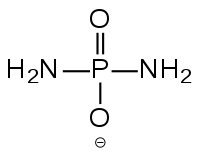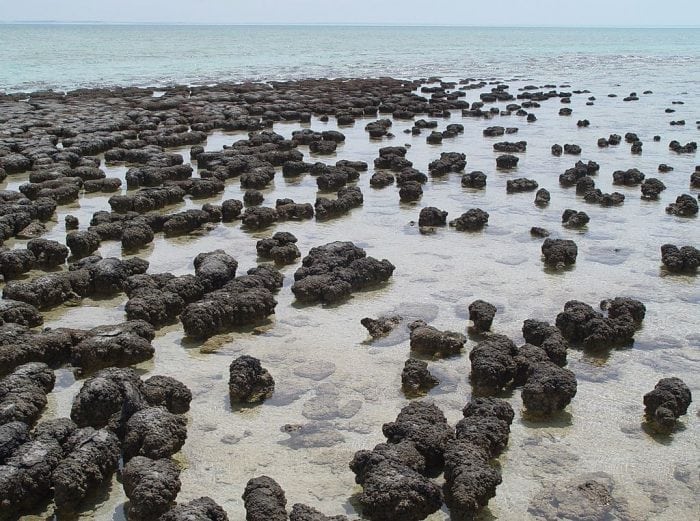
One of the greatest mysteries that has enchanted scientists in recent times is how it was possible for chemical structures to become biological systems. Scientists have many theories regarding how chemistry eventually turned into biology, but no conclusive theories. A new study published in the journal Nature Chemistry may have succeeded in identifying a critical compound for the transition between chemistry to biology that was responsible for the beginning of life, a “missing link” in the study of chemistry.
Researchers of the origin of life at The Scripps Research Institute have identified a compound that could have played a critical role in the origination of all life. The compound is referred to as “diamidophosphate” or DAP.
What Role Does DAP Play?
It is known that the backbone of all life in organic chemistry on Earth is carbon, but carbon could not by itself have created the vast variety of life we see on the Earth today. Carbon needed the assistance of another element on the periodic table, phosphorus.
Researchers of the origins of life speculate that a chemical reaction known as phosphorylation was necessary for the coalescence of three different key ingredients found in early forms of life. These ingredients are nucleotides such as DNA and RNA which store genetic information, lipids which congregate together to form structures like cell walls, and amino acids or peptides which carry out the main function of cells.

Diamidophosphate (DAP) may have played an important role in the origin of life. Photo: By Ueliem – Own work, CC BY-SA 4.0, https://commons.wikimedia.org/w/index.php?curid=63921961
However, despite phosphorylation playing such a key role in the formation of early life, no one had ever managed to find a phosphorylating agent that could have successfully created the three different molecules necessary for life under realistic conditions and was also present upon the early Earth. The discovery of DAP marks the discovery of a phosphorylated agent capable of fulfilling all criteria. It could just be the compound responsible for giving rise to early life.
“We suggest a phosphorylation chemistry that could have given rise, all in the same place, to oligonucleotides, oligopeptides, and the cell-like structures to enclose them,” said Ramanarayanan Krishnamurthy, associate professor of chemistry at TSRI and the study’s senior author.
DAP’s ability to enable these building blocks allowed the creation of other chemical structures that were possible prior to its intervention. This could have easily led to the rise of the first simplistic cell-based organisms.
How DAP Functions
DAP needed a catalyst to start off the process of phosphorylation. Imidazole is a compound that is incorporated into the various biological molecules, and it is the most prevalent amino acid histidine overall. It plays a key role in the formation of many enzymes and proteins.
With Imidazole as a catalyst, DAP could have successfully made that critical jump between the early chemical compounds like cytidine and uridine to the formation of the key ingredients for life. The phosphorylation of nucleosides is a crucial first step towards the creation of RNA, which itself serves as a predecessor to our genes.
The TRSI research team says that DAP could have easily been present in the water on earth billions of years ago when the first cellular organisms began to emerge. Furthermore, the harsh conditions of the globe at that time would not have prevented DAP from functioning as a phosphorylation agent. Imidazole could have enabled the formation of fatty acids and glycerol, and DAP could have linked these structures together into the vesicles, which are primitive versions of the phospholipid bi-layers seen in cell membranes.
The researchers also discovered that when DAP was in the room-temperature water, and it was capable of phosphorylating amino acids and it also helped these amino acids link themselves into short protein chains. So it is clear that DAP impacts the formation of all three building blocks for cellular life.
Says Krishnamurthy:
“With DAP and water and these mild conditions, you can get these three important classes of pre-biological molecules to come together and be transformed, creating the opportunity for them to interact together.”
The Implications of DAP’s Discovery
The discovery of DAP by itself is not proof that it has a role in the origin of life, of course.
One thing that should be considered is that DAP hasn’t been demonstrated to be present in the era where the first molecular life formed.
Independent studies have suggested that early single-celled life may have first arisen on Earth between 4.2 billion to 3.7 billion years ago, or even within a few hundred million years of the planet’s birth around 4.6 billion years ago.
Krishnamurthy acknowledges that the timeframe where prebiotic chemistry leads to the appearance of life is greatly contested in the scientific community. He says the issue will continue to be debated even as new evidence arrives.
However, there are some telltale imprints on the biochemistry of today that could have been left by DAP. Krishnamurthy explains that DAP phosphorylates with the same phosphorus-nitrogen bond breakage that the protein kinases do. Kinases are ubiquitous in present-day life, which suggests the possibility that DAP was responsible for kicking off the phosphorylation trend.
“DAP’s phosphorylation chemistry also closely resembles what is seen in the reactions at the heart of every cell’s metabolic cycle,” says Krishnamurthy.

Photo: By Paul Harrison – Photograph taken by Paul Harrison (Reading, UK) using a Sony CyberShot DSC-H1 digital camera., CC BY-SA 3.0, https://commons.wikimedia.org/w/index.php?curid=714512
The research team says that the next step for them is working with geochemists to determine a potential source of non-biological sources of DAP. Since researchers have been looking for ways that non-living chemical structures can give rise to life, they want to see if the catalyst for the transformation between chemical structures to life can come from non-biological sources.
Krishnamurthy and the rest of the research team think there might have been minerals present on the surface of early Earth which released phosphorus-nitrogen compounds in the right conditions. Krishnamurthy notes that astronomers have managed to find evidence for phosphorus-nitrogen compounds in the dust and gases found in interstellar space, meaning it is plausible such compounds were present during the Earth’s early years, and that they may have played a role in the emergence of cellular life.
While it is too early to say if DAP did indeed play a role in the emergence of life from chemical structures, the possibility remains exciting and worthy of investigation.









